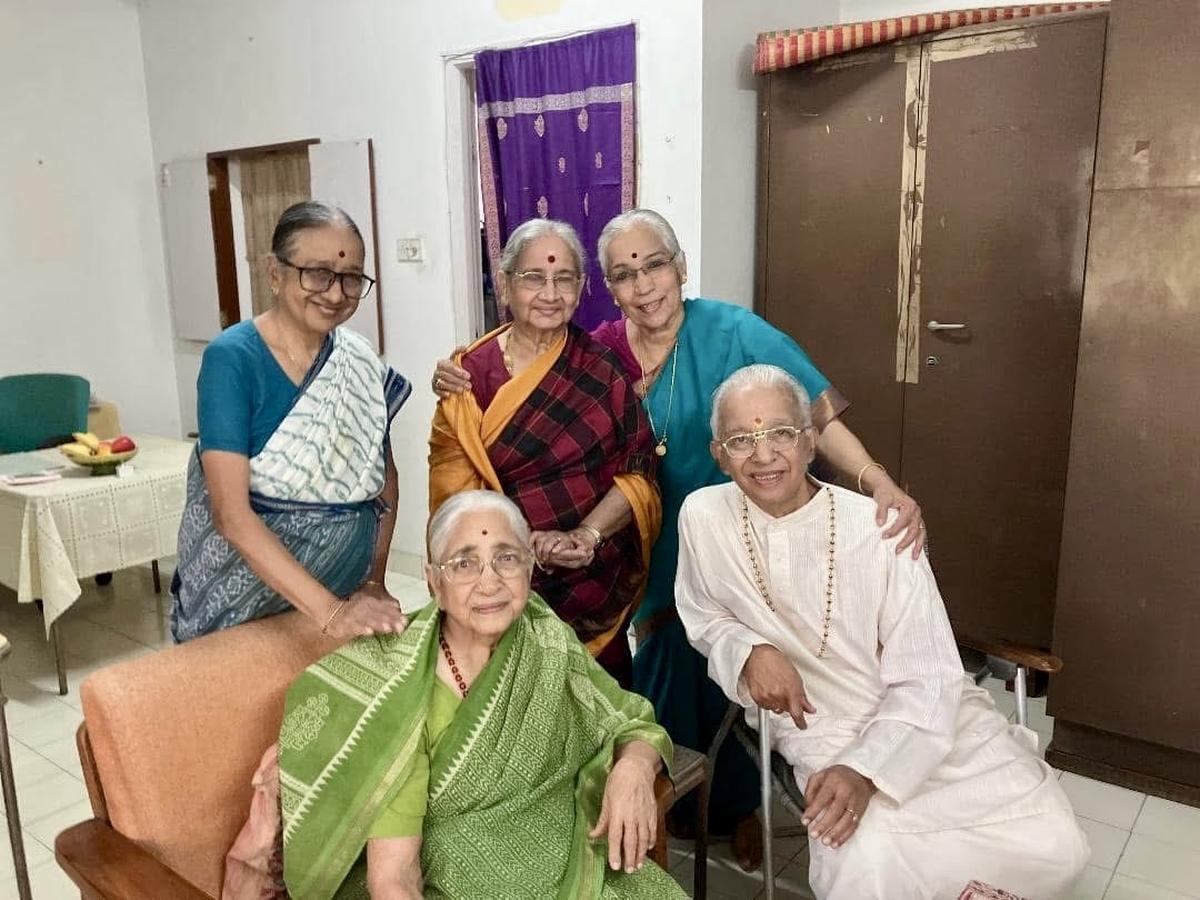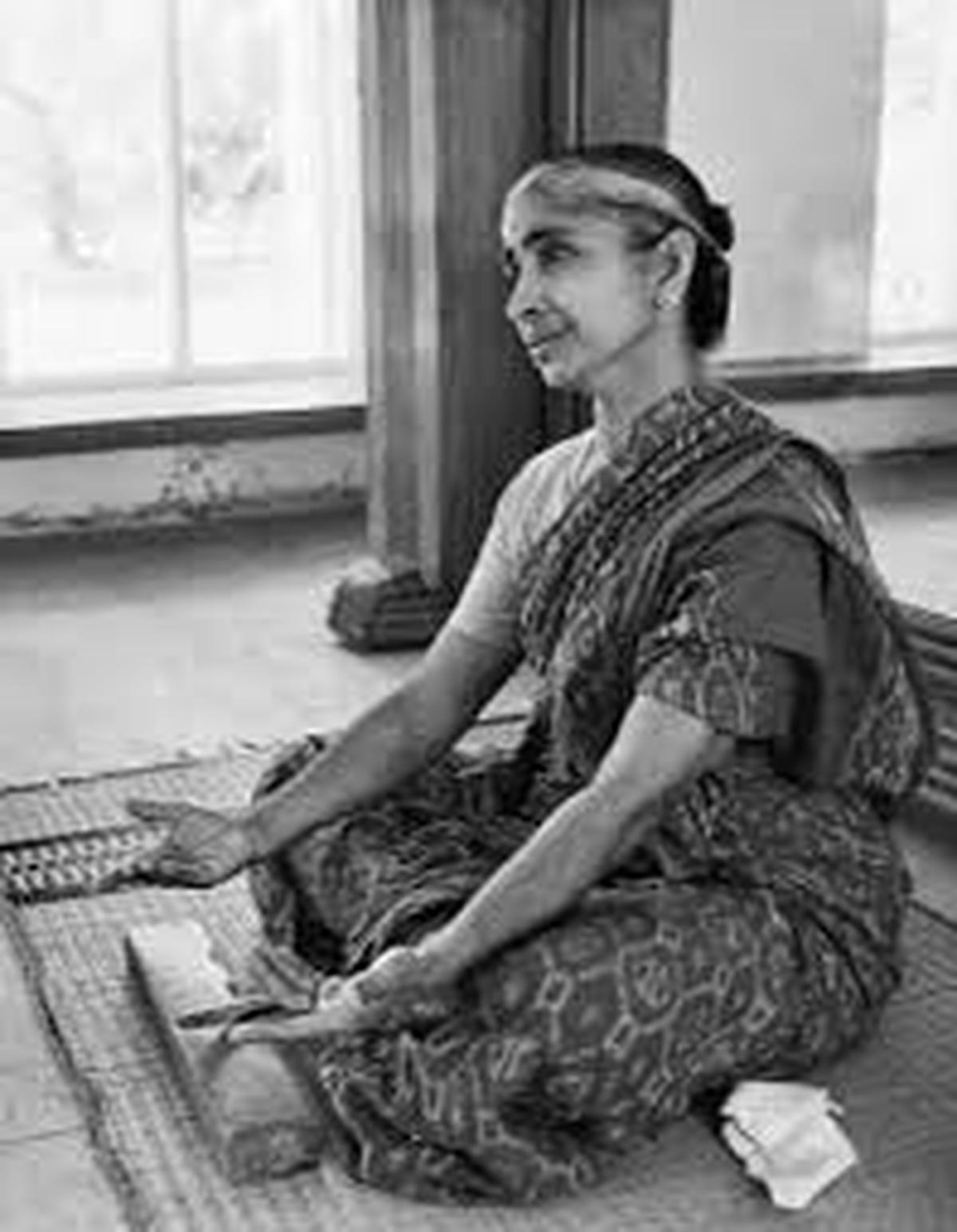
Sarada Hoffman (1929-2025)
| Photo Credit: Special Arrangement
Alladi Sarada (Sarada Hoffman), born in 1929 in the Adyar Theosophical campus, never allowed anyone to use the title ‘Guru’ before her name, instead always preferred to be called ‘Sarada Teacher.’ Resident students at Kalakshetra also lovingly identified her as ‘Chinna Sarada’ because the senior scholar, S. Sarada, her elder contemporary, was also guiding all of us through a comprehensive education in naatya.
Chinna Sarada is known for her uncompromising precision as a Bharatanatyam artiste herself, as well as an exemplary teacher who is instrumental in creating and standardising a Kalakshetra methodology for Bharatanatyam. Because of these efforts of Sarada Teacher and many other teachers, the world has recognised the Kalakshetra methodology as the best foundation for Bharatanatyam, unifying several loosely-knit traditional training systems that helped in establishing a Kalakshetra legacy.

Sarada Teacher with her students Dhananjayan, Shanta, Savitri Jagannatha Rao and Ambika Buch
| Photo Credit:
Courtesy: V.P. Dhananjayan
Sarada Teacher was Rukminidevi Amma’s ideal model for shaping a keen precision on the physical body and in bodily execution. She, in turn, transferred that to her immediate lineage, creating a galaxy of Kalakshetra models starting with Yamini Krishnamurthy, Adyar Lakshman, C.V. Chandrasekhar, Shanta and myself, Krishnaveni Lakshmanan, Ambika Buch, Kala Ramesh, Savitri Jagannatha Rao, Balagopalan, Janardanan, Neela Satyalingam (Sri Lanka) and Balasundari Prathalingam (Sri Lanka). N.S. Jayalakshmi (teacher) also helped Sarada Teacher in this process. Years later, well-known Kalakshetra alumni such as G. Narendra, P.T. Narendran and Shijith Nambiar/Parvathi also studied under her and were guided by Sarada Teacher.
Even though Rukminidevi cast Chinna Sarada in a few major roles such as Parvathi in ‘Kumarasambhavam’, Vasanthavalli in ‘Kutrala Kuravanchi’, Andal in ‘Andal Charitam’, as a true acharya, she let her sishyas shine in the lead roles in most of the Kalakshetra productions. Some examples include Sarada Teacher performing the role of the main sakhi opposite to Shanta as Radha in ‘Geeta Govindam’. In the Ramayana series, she immortalised the role of Manthara in ‘Sri Rama Vana Gamanam’ and she, along with Shanta, performed two lightning-quick minutes as apsaras in ‘Paaduka Pattabhishekam’. Rukmini Devi cast Shanta in these productions to match Sarada Teacher’s precision and perfection. I had the good fortune of playing the role of Periyazhwar opposite her Kodhai or Andal.

As a teacher, she always let her sishyas be under the spotlight.
| Photo Credit:
Special Arrangement
Some of Sarada Teacher’s own small choreographic ventures include Naatu Padal, Kummi, Kolattam, Tiruppugazh verses and bhajans. ‘Murugan Thiruvarul’ was the only full-fledged dance drama she choreographed in Kalakshetra. Unfortunately, Kalakshetra failed to regularly perform it, unlike their other productions.
In my book, Beyond Performing: Art & Culture, there is an exhaustive four-page article on Sarada Teacher, throwing more light on her work and contributions to Kalakshetra, which owes her a monumental tribute.
Accolades are not many but notable. Sangeet Natak Academy (1996), Venkatakrishan Mama’s Sankarabharanam and Natyarangam of Narada Gana Sabha came forward to honour her before she left for California to settle down under the good care of her children, Geetha Hoffman and Krishna Hoffman and his wife Paulomi Pandit (also her student). Special mention must be made of her receiving the first Rukmini Devi Medal for Excellence in the Arts, established by the Centre for Contemporary Culture, New Del
Published – September 15, 2025 02:55 pm IST


